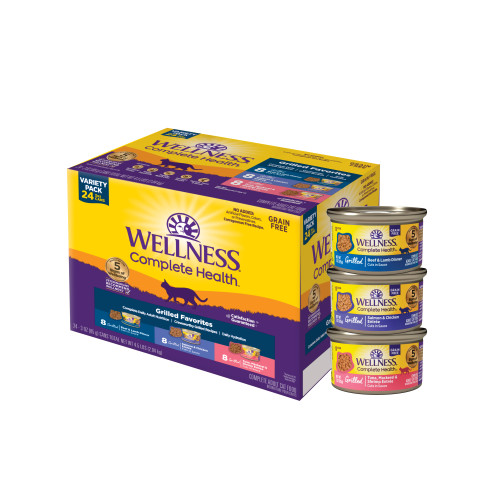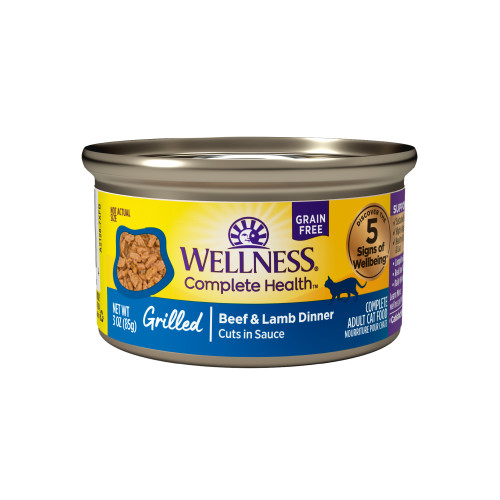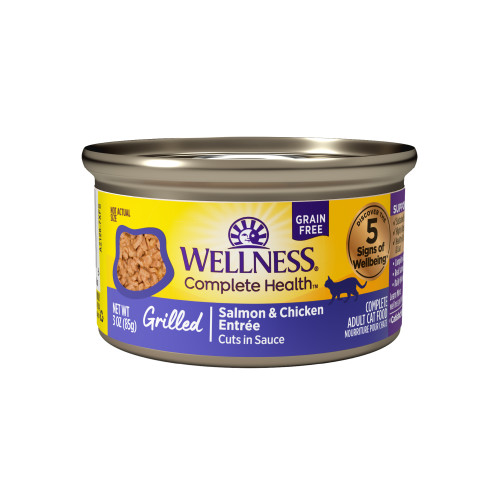January 15, 2024
The Importance of Gut Health for Dogs and Cats
Hippocrates, the father of modern medicine, once famously declared, “all disease begins in the gut.” “Let food be thy medicine, and let medicine be thy food.” Over two thousand years later, it seems that modern science is beginning to catch up with him, as increasing evidence is emerging of the vital role that the gut, and more specifically, the microbiome – the trillions of bacteria, viruses, fungi and other organisms living within it – can have on the mental and physical wellbeing of not only humans but also our dogs and cats.
What is Considered Good Gut Health For Dogs & Cats?
When it comes to maintaining good health, there is nothing more important than a healthy gut. Once considered a relatively “simple” body system, comprising essentially of one long tube through which food would pass, be absorbed, and then excreted, the digestive system today is recognized for doing so much more than just digesting and eliminating food.
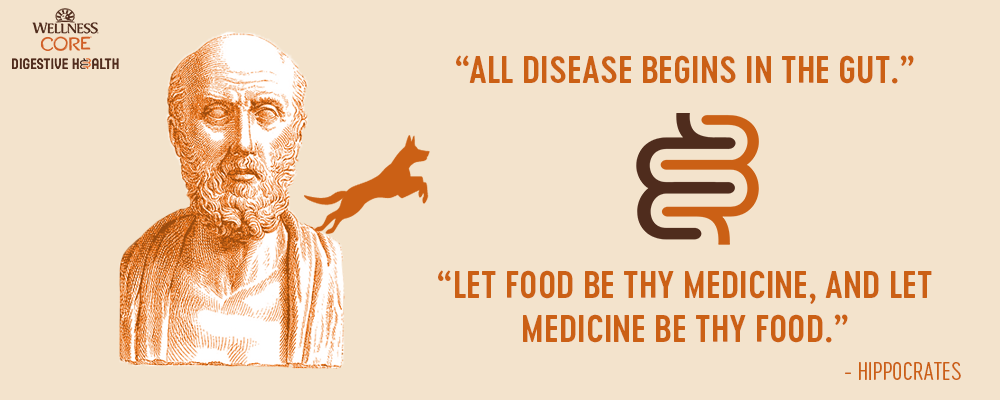
Inside it’s winding tubes lives a whole ecosystem of organisms that work together to keep an individual healthy. Just like any other living organism, you need to create the right conditions and provide a supply of good food to keep them going and the microbiome is no different. Optimizing the balance of the trillions of organisms living in the digestive system is key to true gut health and the secret to helping all pets achieve a lifetime of wellbeing.
What Is The Microbiome?
The term “gut microbiome” refers specifically to the trillions of microorganisms living in the intestinal tract. While some microorganisms are harmful to our pet’s health, many are incredibly beneficial and even necessary to a healthy body.
At birth, a pet’s microbiome is the result of genetics, but external factors come into play as soon as the puppy or kitten begins interacting with the outside world. As such, a pet’s diet, environment, lifestyle, and medications (particularly exposure to antibiotics, which can deplete gut bacteria) can have both positive and negative effects. The result is that every dog and cat having a uniquely individual microbial and keeping these tiny organisms in the optimal balance is key to wellbeing. Or, put simply, when both the good and bad microorganisms are in balance, our pets can thrive, but when they are out of whack, so too is our pet’s health.
The Benefits of a Healthy Digestive System & Microbiome For Pets
Scientists and veterinarians are still studying the gut microbiome’s full impact, but it is well accepted that it plays a key role in a dog and cat’s overall health and wellbeing, impacting digestive tract function, nutrient absorption, immune status, body condition, and many important hormonal responses. When a pet has a healthy digestive system and balanced microbiome, key benefits can include:
- Optimal Digestion & Nutrient Absorption: Your pet’s microbiome requires sufficient food to stay healthy. These organisms can take undigested elements of your pet’s food, like dietary fiber, and break it down into smaller components which are our pet’s food can stay within your pet so you will see regular, healthy, and firm stools in the litter box or backyard. then able to be used as additional fuel. With improved nutrient absorption, more of the nutrients from your pet’s food can stay within your pet so you will see regular, healthy, and firm stools in the litter box or backyard.
- Immune Health: 70% of a pet’s immune system is located within your pet’s digestive system so having a healthy microbial balance is key to ensuring their immune system functions at its best. When your pet has a strong, highly diverse microbiome, it is also more difficult for “bad bacteria” to take up residence and make your pet sick.
- Vitamin Production: The bacteria in the microbiome help produce vitamins including B vitamins (i.e. B12, thiamine and riboflavin) and Vitamin K which all work as micronutrients essential in supporting health and wellbeing.
- Healthy Skin and Coat: Keeping the microbiome in a healthy balance helps protect against excessive inflammation or itchy skin. When further combined with nutrition containing increased meat proteins and omega fatty acids, you will be ensuring your pet has all the key nutrients they need to keep their skin healthy and their coat lustrous and soft.
- Vitality and Energy: With optimized nutrient absorption, a pet can easily digest and absorb the high-quality nutrition they eat to turn it into energy that fuels their day-to-day activity and play.
How Do I Know If My Pet Has An Unhealthy Digestive System?
There are many ways an unhealthy gut can reveal itself. Obvious symptoms such as loose stools, increased flatulence, constipation, or diarrhea can all be signs of an unhealthy gut. Others less obvious could include why your pet has developed certain food intolerances, why may be suffering from skin upsets and why a pet may be suffering problems absorbing those essential nutrients form their food.
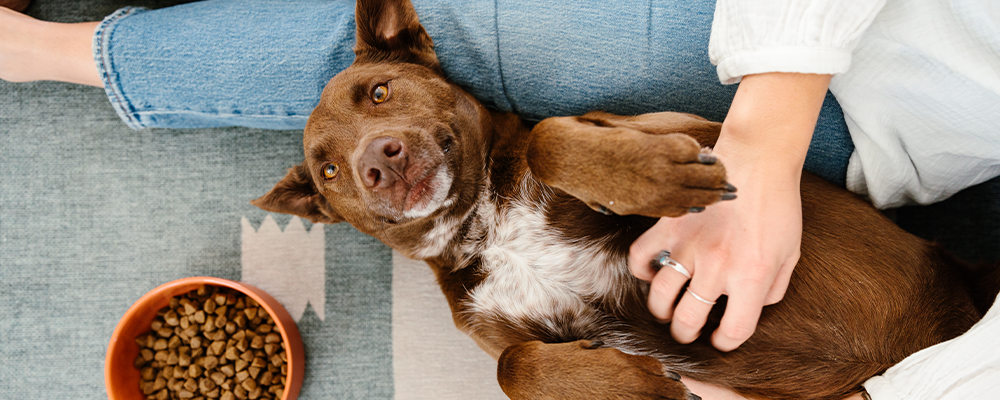
So, How Do I Keep My Pet’s Digestive System Healthy?
The gut is no different to most parts of your dog or cat’s body. It relies on them eating a healthy diet boosted with digestive health inclusions to work optimally. By changing what you feed your pet, you can help optimize their microbiome and support not only their digestive health but most importantly their overall wellbeing.
Look for a complete and balanced recipe that contains the following key ingredients and you will ensure your dog or cat is receiving the highest quality digestive health nutrition:
- High quality animal proteins and whole grains to optimize nutrient absorption and support high digestibility
- Dietary fiber such as beet pulp fiber to help promote regular and healthy firm stools
- Prebiotics such as FOS and MOS that support the growth of good bacteria
- Probiotics or so-called additional “good” bacteria which help balance the microbiome
So, How Do I Transition My Pet’s Diet?
If your pet has a less-than-healthy intestinal system or has had problems with diarrhea and vomiting, it is going to be important to make a slow transition onto Wellness CORE Digestive Health formulas. You use the slow transition schedule you would for any other pet, just over a longer period of time. Give yourself a good 18-21 days to transition. It’s a good idea to begin with 90% of the old food and 10% of the new food. Every two or three days reduce the old food’s percentage by no more than 10% while increasing the new option in the bowl. The transition could look something like this:
- Day 1-2: 90% old/10% new
- Day 3-4: 80% old/20% new
- Day 5-6: 70% old/30% new
- Day 7-8: 60% old/40% new
- Day 9-10: 50% old/50% new
- Day 11-12: 40% old/60% new
- Day 12-13: 30% old/70% new
- Day 14-15: 20% old/80% new
- Day 16-17: 10% old/90% new
- Day 18: Full transition (based on your pup’s reaction to each day’s change)
If your pet experiences digestive upset, go back to the amount from the day before and stay on that amount for an extra few days, then gradually start the transition schedule again. If you are still unable to make the change without diarrhea or vomiting, stop the transition and speak with your veterinarian.
Wellness CORE Digestive Health contains these key ingredients and more. Fuel your pet’s wellbeing, starting with digestive health.
Click below to get a $5 coupon off any Wellness® dry dog or dry cat food mailed to your home



